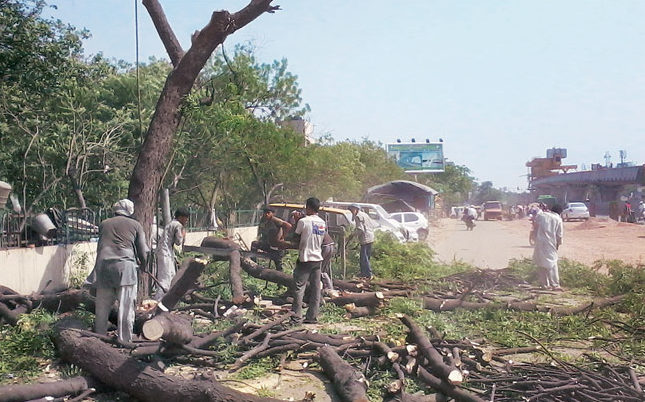Tree mapping, imagination and creativity to draw up urban construction plans by govt can save precious greenery in cities
Every big and small city in India is struggling to protect its precious greenery against the onslaught of rapid urbanisation. Trees are being ruthlessly cut down to make space for highrises. Saplings are being planted to apparently “make up” for the loss of the trees cut down. But saplings cannot compensate healthy adult trees immediately, pointed out Anumita Roychowdhury, executive director of Centre for Science and Environment (CSE).
“If full grown trees are cut down for development projects, it is obvious that saplings can’t be planted in the same area. These would be planted elsewhere and therefore it basically does not make up for the loss of tress in that particular area. Pollution is likely to increase where the trees are felled,” she said.
The Delhi High Court on June 25, asked the National Buildings Construction Corporation (NBCC) to put on hold a project involving cutting down almost 17,000 trees in south Delhi. The High Court was hearing a petition challenging the NBCC’s plan to cut trees to build housing complexes for government officials in the national capital. The court directed NBCC to not cut down any more trees until July 4.
According to air quality data released by World Health Organisation (WHO) in May, fourteen Indian cities are among the 20 most polluted ones in the world, with Delhi topping the chart of all megacities in the world.
Environmentalists and residents of Delhi are shocked that the NBCC was going ahead with such a grand plan of tree felling under such a backdrop. A significant number of trees have already been cut down at a time when scarcity of greenery is a matter of grave concern in the national capital.
According to Forest Survey of India, only 20.22 per cent geographical area of Delhi is covered with greenery though the stipulated criterion is 33.33 per cent.
“We can’t afford to lose so many trees because trees bring down the pollution level,” Roychowdhury said. “With high rate of construction, carbonisation is gradually increasing in Delhi, and it’s getting hotter. We need greenery as trees trap dust particles and do not allow dust to go into the air.”
NBCC authorities have said that they needed to cut down the trees to fulfil the high demand of housing complexes and homes in Delhi. But they would plant saplings to make up for the loss. Union minister of state for housing and urban development Hardeep Singh Puri has said that for “every slashed tree, we will plant ten trees.”
But environmentalists point out that saplings can’t replace fully grown adult trees as those new plants would have less ability to curb pollution which could prove fatal in Delhi.
Roychowdhury says it’s not important how many saplings are planted. Instead, their longevity and survival rate should be the focus. “We may plant 20 saplings, but only two or three of them survive, which ultimately does not fulfil our aim. The government should properly monitor how many saplings ultimately grow to be big trees,” she said.
The problem of felling trees to make way for highrises is not just restricted to Delhi, all small and big cities are faced with the same problem of protecting its greenery.
So what are the alternative ways to carry out developmental projects without harming the greenery?
Roychowdhury said, “Tree mapping helps figure out how an area is covered with trees. On the basis of that, the government should use the expertise of architects and urban planners to design and plan new construction harming the least number of trees. They need to bring in imagination and creativity to save plants.”
In February this year, the Supreme Court approved the “Comprehensive Action Plan” to curb severe air pollution in Delhi. But the main question is how fast those plans will be implemented, wondered Roychowdhury.

